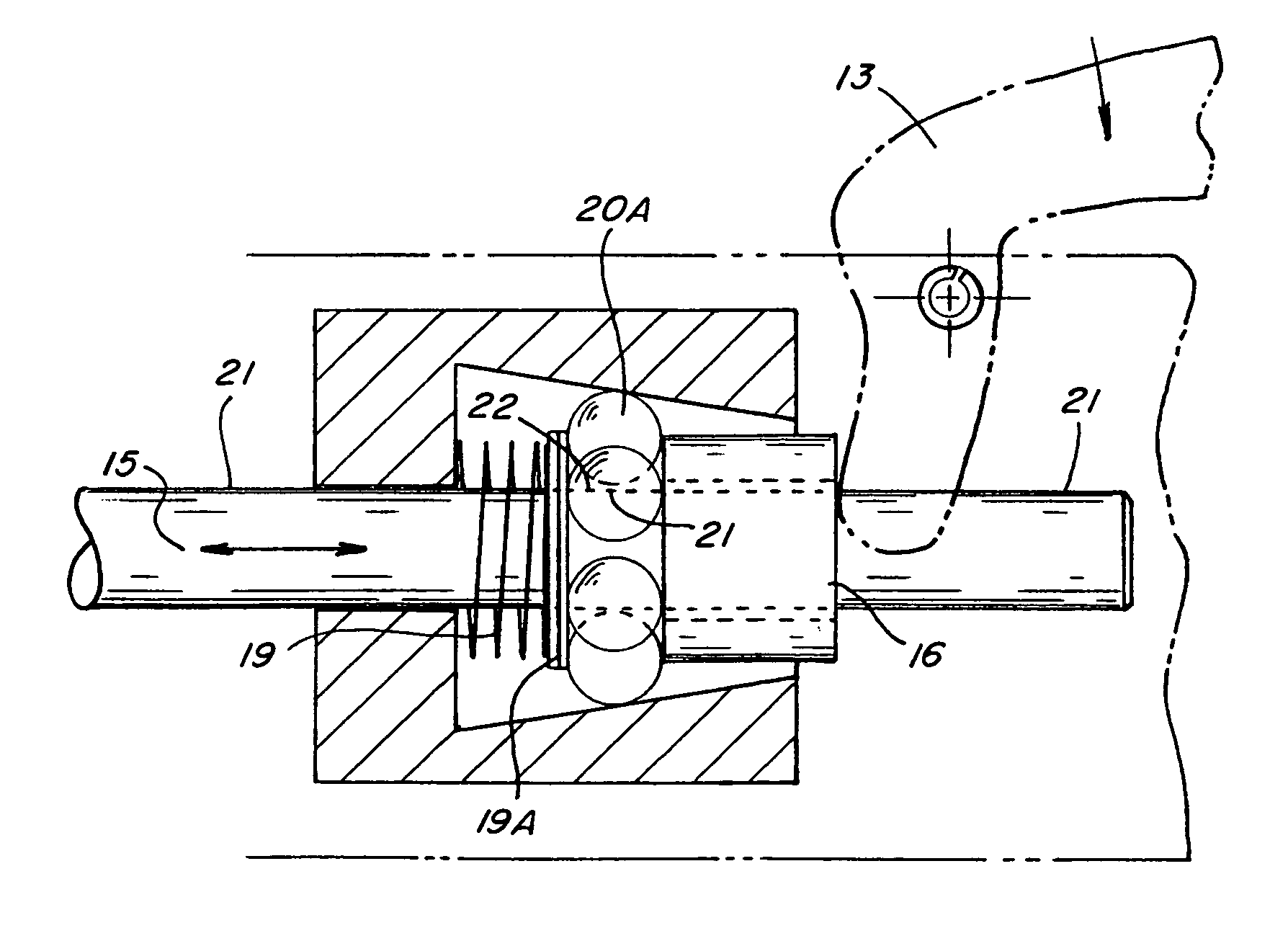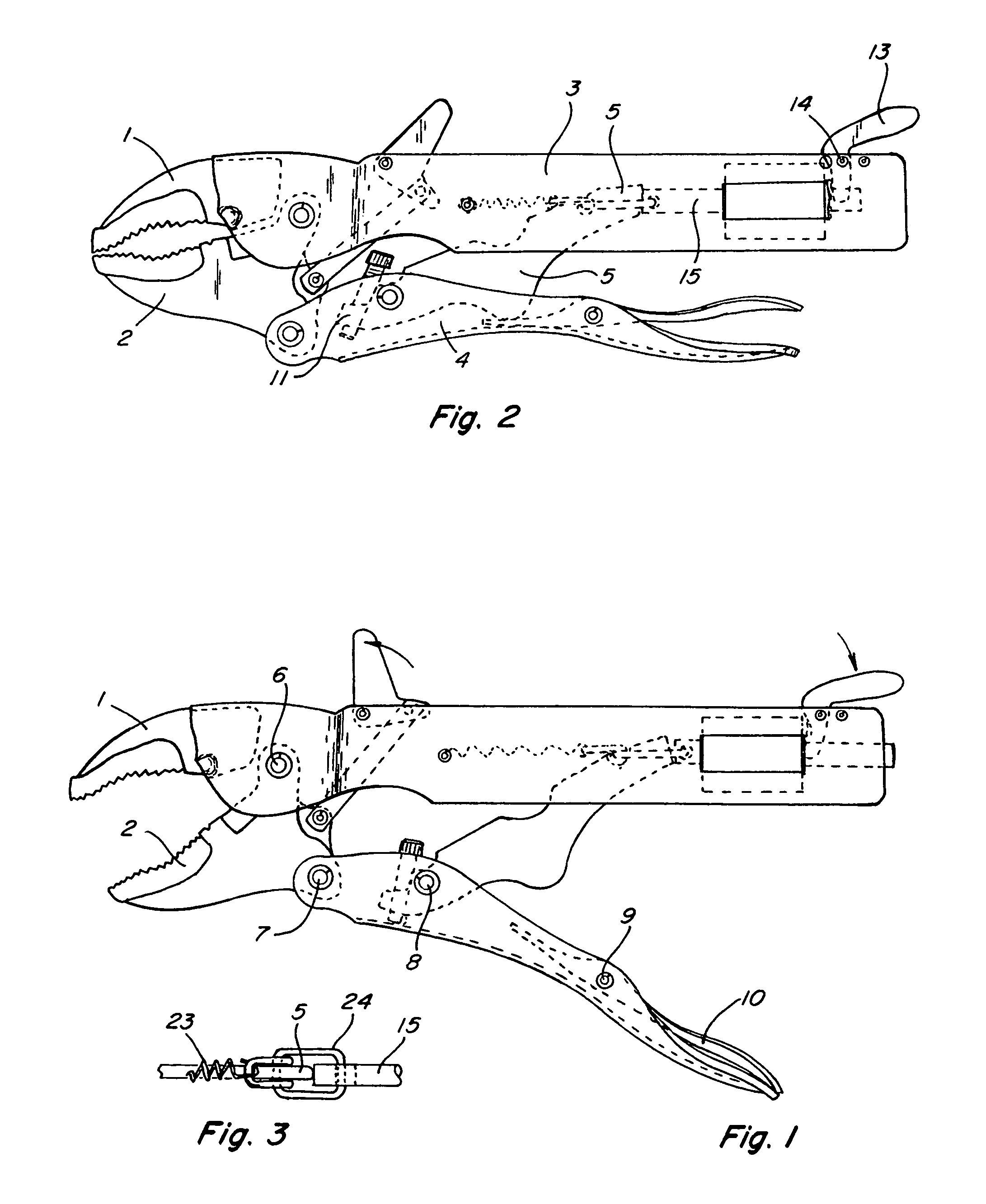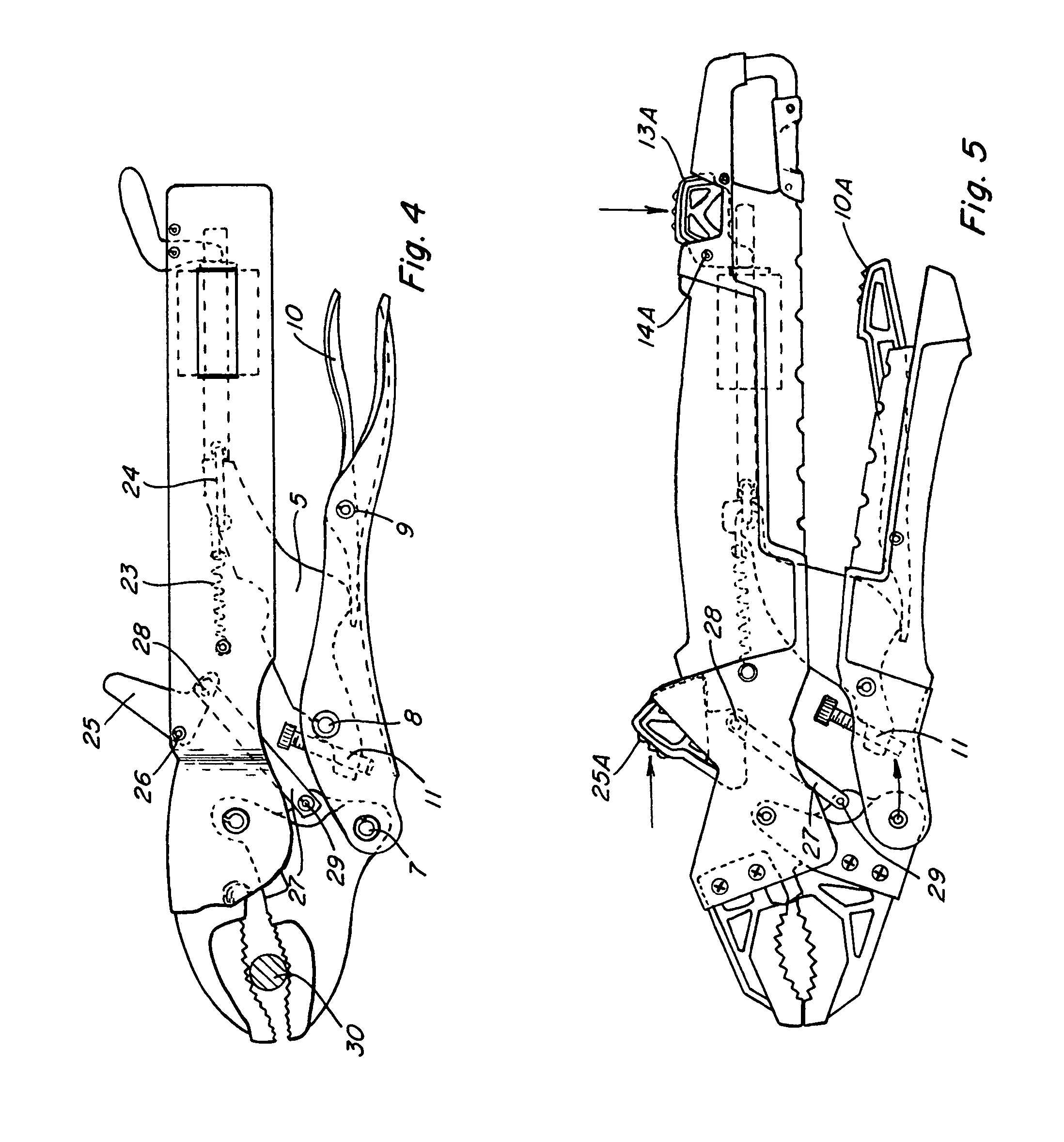Automatic sizing one-handed locking pliers
a technology of locking pliers and one-handed sizing, which is applied in the field of mechanical tools, can solve the problems of cumbersome and time-consuming task of adjusting the locking pliers, requiring both hands of the mechanic, and tedious us
- Summary
- Abstract
- Description
- Claims
- Application Information
AI Technical Summary
Benefits of technology
Problems solved by technology
Method used
Image
Examples
second embodiment
[0047]Another difference in the second embodiment is the use of an alternate thumb jaw piece 25A. In place of the pivoting boot 25, shown in the embodiment of FIG. 4, a sliding thumb jaw piece 25A is provided. The alternate thumb jaw piece 13A moves upwardly when the user slides the thumb jaw piece 25A upwardly. This action moves the linkage 27 upward, which opens the lower jaw 2. The thumb jaw piece 25A is designed to be pulled upward on a slant as shown in FIG. 5.
[0048]Alternatively, a second thumb jaw piece pivot could be provided such that the thumb jaw piece pivots when the piece 25A is depressed by the user's thumb. Depressing the piece 25A would pull the linkage 27 upwards, releasing the lower jaw.
[0049]In the embodiment in FIG. 5, a more ergonomically designed lower release paddle 10A also replaces the standard release paddle 10. While the second, alternate embodiment shown in FIG. 5 has the above slight modifications, the main and essential parts of the device remain the sa...
embodiment 36
[0052]Also in embodiment 36 in FIGS. 10 and 11, another alternative release paddle 10B replaces release paddle 10 and 10A shown above. Again, jaw 2 is pivotally connected to handle 3 at pivot point 6. Handle 4 is pivotally connected to jaw 2 at pivot point 7. Middle lever 5 is pivotally connected to handle 4 at pivot point 8. However, release paddle 10B is now pivotally connected to handle 4 at a pivot joint 42, closer to jaws 1 and 2 than the irregularly shaped humped portion of middle lever 5. Once the locking pliers have been locked onto a workpiece, they may be released by moving release paddle 10B upwardly, as denoted by arrow D, toward handle 3. The release paddle 10B pivots about pivot point 42. The surface of release paddle 10B comes into contact with the irregularly shaped humped portion of middle lever 5, which is forced thereby upwardly and toward the jaw end of the pliers. This motion releases the upper and lower jaws. As stated above, an advantage of this construction i...
PUM
 Login to View More
Login to View More Abstract
Description
Claims
Application Information
 Login to View More
Login to View More - R&D
- Intellectual Property
- Life Sciences
- Materials
- Tech Scout
- Unparalleled Data Quality
- Higher Quality Content
- 60% Fewer Hallucinations
Browse by: Latest US Patents, China's latest patents, Technical Efficacy Thesaurus, Application Domain, Technology Topic, Popular Technical Reports.
© 2025 PatSnap. All rights reserved.Legal|Privacy policy|Modern Slavery Act Transparency Statement|Sitemap|About US| Contact US: help@patsnap.com



